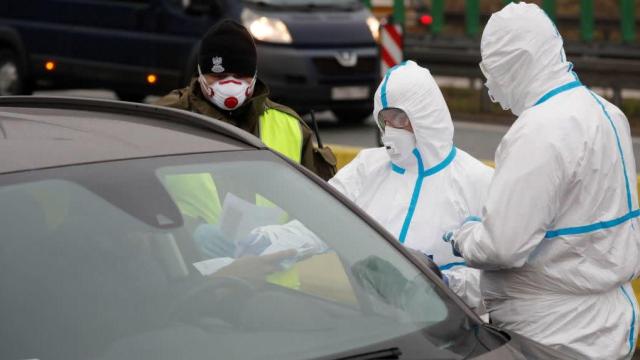This weekend, the coronavirus outbreak officially reached more than 100 countries, touching every continent but Antartica. China is no longer the only hotspot, with large epidemics currently affecting South Korea, Iran, and Italy, while other countries like the U.S. are almost certainly dealing with huge numbers of hidden cases.
Yet, while the World Health Organisation continues to warn that the world is at very high risk from COVID-19, their refusal to state the obvious has become baffling. We’re not on the brink of a pandemic anymore—we’re in the middle of one.
In late February, the WHO made a point of avoiding the p-word, just as the first clusters of local cases were reported in South Korea, Iran, and Italy. At the time, WHO Director General Tedros Adhanom Ghebreyesus stated their rationale for not declaring a pandemic was that they “were not seeing uncontained global spread of this coronavirus.”
[referenced url=” thumb=” title=” excerpt=”]
Since then, those three countries are on the verge of eclipsing 10,000 reported cases within their borders, while over a quarter of the nearly 112,000 confirmed cases as of March 9 have now occurred outside of China. Even these numbers are likely a steep underestimate, thanks to milder cases going under the radar and a woefully inadequate public health response by many countries, including the U.S. Though the U.S. has reported a little over 500 cases so far, much of the country remains unable to test many people suspected of having the coronavirus or to mass-screen people, as countries like South Korea have.
During a press conference held Monday, Tedros still shied away from declaring the outbreak a pandemic, only going as far to state that “the threat of a pandemic has now become very real.” Instead, he called it an “uneven epidemic at the global level,” arguing that it was still possible to substantially alter the trajectory of the outbreak through containment and mitigation.
It’s true that some countries such as Singapore have appeared able to stop the outbreak from spreading far, while China and South Korea have started to see their daily new cases drop, providing hope their outbreaks are closer to ending than not. But many countries are poised to see a sharp jump in reported cases, while other countries, like Turkey, continue to deny that the coronavirus has even reached them—a ludicrous claim, considering that it’s sandwiched between Iran and a half dozen countries where cases have been reported.
Turkey’s reluctance to acknowledge the virus points to a possible justification for the WHO to not declare a pandemic yet: the fear of an economic and public panic. But that genie has gone out of the bottle. The stock market may experience one of its worst days in decades by the end of today, and some experts are already predicting a global recession fuelled by the coronavirus.
The longer public health organisations like the WHO fail to acknowledge the reality of what’s happening, the harder it will be to convince governments and people around the world to do what’s necessary to make it through this pandemic with as few lives damaged as possible.
South Korea, for instance, has reported one of the lowest fatality rates of COVID-19 (around 0.5 per cent of cases) so far, while the average fatality rate worldwide hovers around 3 per cent. That discrepancy is at least partly because South Korea has been able to test so much more of its population, finding more milder cases than other countries. But South Korea’s universal and strong health care system also means that its sick residents are probably getting better care earlier. Countries without those benefits or that aren’t prepared enough to deal with the outbreak as it reaches their shores are sure to see more people die.
On Monday, CNN and the Los Angeles Times announced they would start referring to this outbreak as a pandemic, a decision that I wholeheartedly agree with. It’s due time for the WHO to do so as well.
Gizmodo reached out to the World Health Organisation for comment but has not heard back as of yet.
